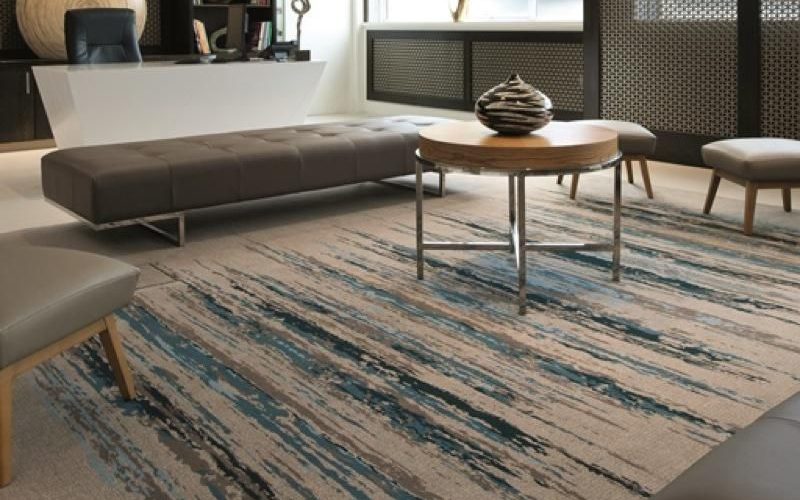For those with a first-time decision about what type of carpet to use, the choices can be overwhelming. Many people have never had to choose what type of carpet they would like and so confusion is common. Luckily, there are some easy steps to keep in mind when choosing carpet for a new home or a remodel.
Before dealing with choosing a carpet color, choose a style and material. The chosen style should reflect how the carpet will be used first and foremost and then take into consideration the desired overall look for the area. The most common choice of carpet by far is the textured cut pile. It comes standard in most apartments and is used for high-traffic areas because of the fact that it has varying lengths of carpet fibers which will resist crushing. This means that footprints do not show up as well on the carpet, masking the marks that are common to high-traffic areas.
On the opposite end of the spectrum are formal plush carpets. Every single foot step, child’s hand print, and vacuum mark will show up on a formal plush carpet because it is very soft, meaning that this carpet is more difficult to care for if you really want to keep it looking nice. Velvet carpet has much the same upkeep requirements as formal plush but feels more sheer beneath the feet. These two types of carpet are probably best for rooms where the luxury of a soft carpet can be appreciated, but not a room that gets a lot of use throughout the day.
In between the spectrums are berber and frieze carpets. A berber carpet is defined as being “any carpet with loops” though most believe it to be a brand name. The loops of a berber carpet make it strong and crush-resistant so it does very well in areas that usually receive only foot-traffic such as hallways. There are various options available with berber carpets such as multi-level berber that is used to create patterns within the carpet or a cut-loop carpet which is also used to create patterns such as squares, outlines, floral patterns, etc.
Frieze carpets are the most commonly chosen carpet types for offices, churches, etc. They appear crimped and twisted with the fibers pointing in various directions. Footprints and vacuum marks do not show up at all on a frieze carpet and it is both cost-effective and durable. Though not the softest or most aesthetically pleasing of carpet choices, it is a very good option if getting the best carpet life is the objective.
The four most common forms of carpet fibers (the material the carpet is made out of) are nylon, polyester, wool, and olefin. Nylon is by far the most popular because it is soft, cost-effective, and relatively stain resistant. It also is fairly mold resistant and holds its color well. Nylon tactesse is a special blend of nylon created to be softer and last longer. Wool is the softest and most durable option available but is very expensive and not at all stain resistant. It is definitely not recommended for families with children who could so easily spill food or drink on the carpet, as stains will set in quickly and be a pain to try and remove.
Olefin is very durable and is usually paired with frieze carpeting for commercial use. This is what causes the rough feeling of most office building carpets. It is made for a longer lifespan and not comfort. Polyester is often seen as a knock-off choice for nylon as it has many of the same basic qualities but fades much more easily and sheds fibers. It has a much lower price tag but over 50% of all carpets are made out of nylon and polyester has been largely unsuccessful at gaining market share.
It is important to note that carpet manufacturers are constantly choosing new types of fibers to try and make carpets out of and you should not let them pressure you into choosing something without getting information about it first. One good website to check is http://www.carpet-rug.org/index.cfm, the official website of the Carpet & Rug Institute.
Once you have chosen your carpet type and material, all you have left to do is match it up with the color you think will best suit your room or house and watch your designing come to life!



